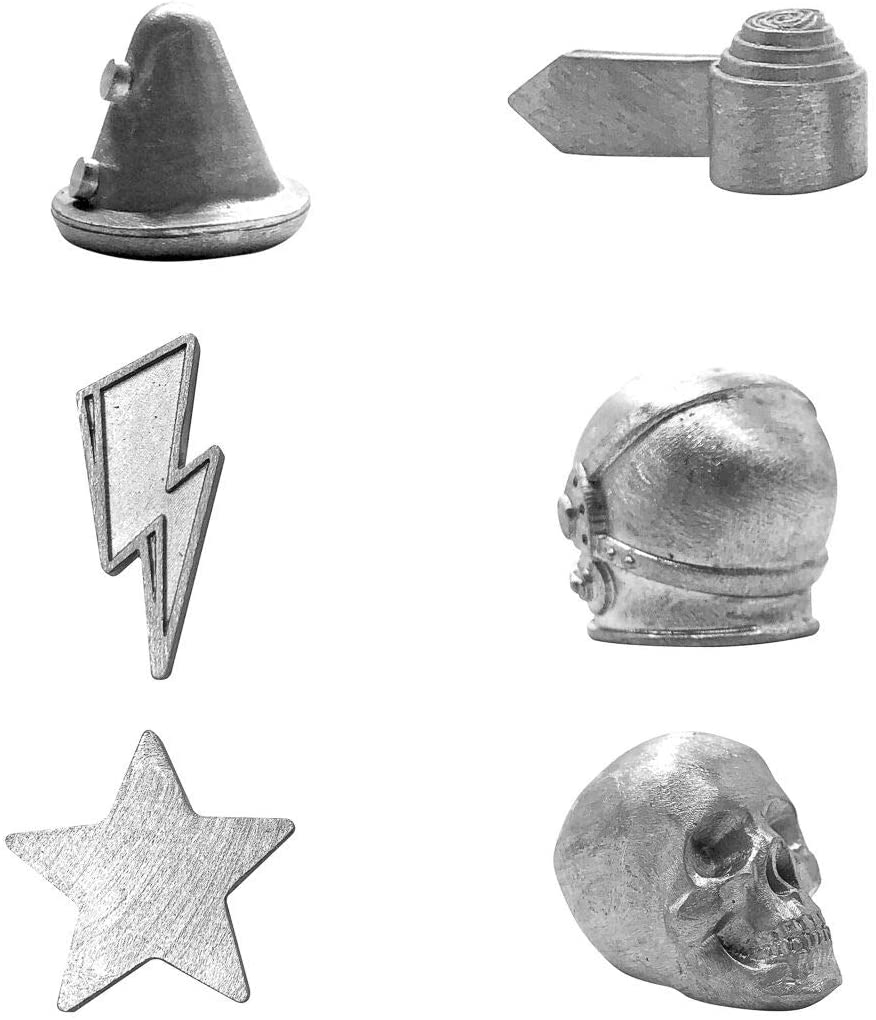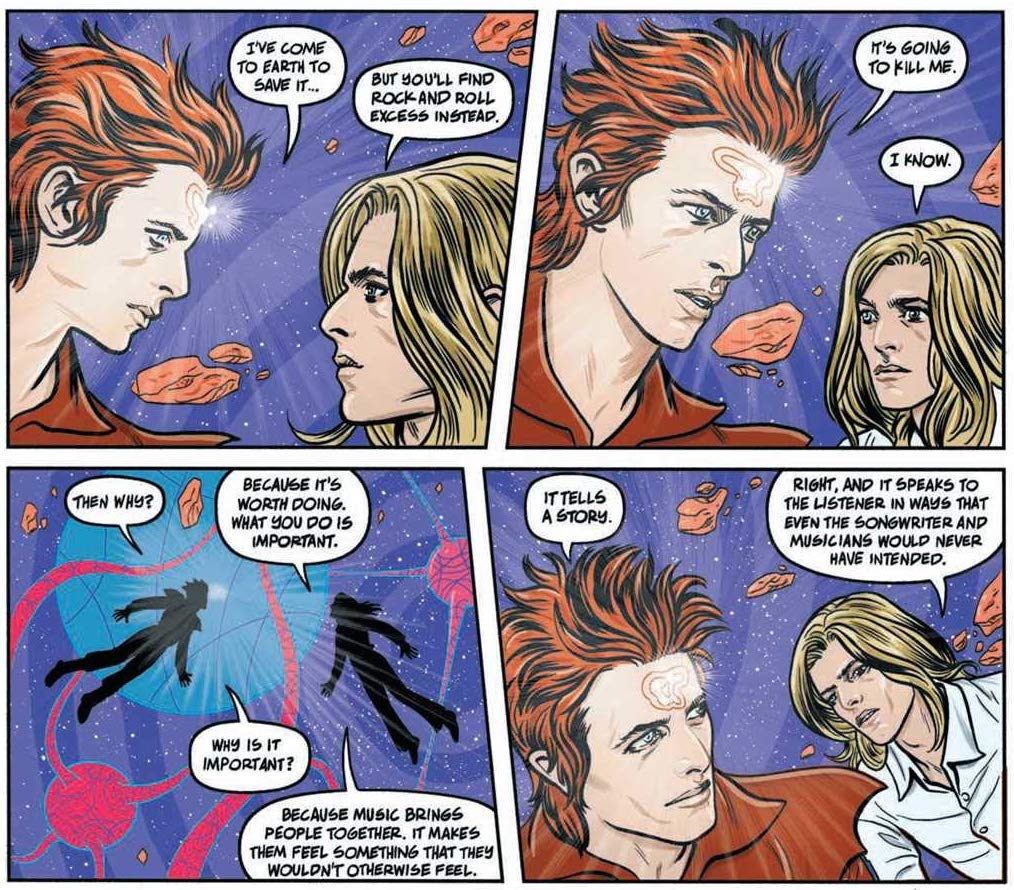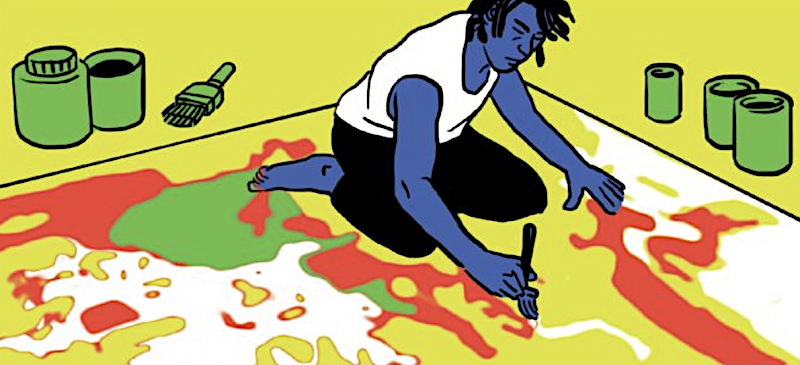
A Sense of Doubt blog post #2457 - Various Bowie stuff
Normally Mondays (yesterday) are Musical Monday. I delayed a music post to share material with my students on poetry and Sylvia Plath's "Lady Lazarus."
So today, here's a belated music post, not added to the Musical Monday category, of cool Bowie stuff.
https://www.openculture.com/2020/06/nile-rodgers-tells-the-story-of-how-he-turned-david-bowies-lets-dance-from-folk-to-new-wave-funk.html
Nile Rodgers Tells the Story of How He Turned David Bowie’s “Let’s Dance” from Folk to New Wave Funk
When David Bowie invited Chic guitarist and all-around funk/disco guitar genius Nile Rodgers to make an album of “hits” in Switzerland, Rogers remembers thinking, “okay, ‘hits’ with David Bowie, that’s an awesome project.” The way he deadpans might make us think he wasn’t super stoked about it, but the fact is, it’s hard to impress Nile Rodgers. He has produced, written, and played guitar—the very Stratocaster he’s holding in the video above—on “hundreds, maybe thousands” of records, he says. What’s one more, with one more superstar?
The album, it turned out, would become Let’s Dance, runner-up to Thriller for album of the year in 1984, containing such danceable hits as the title track, “Modern Love,” and “China Girl.” It was to be Bowie’s best-selling album—as he described it, “a rediscovery of white-English-ex-art-school-student-meets-black-American-funk.” He certainly brought the first part of that equation, a tune he strummed for Rogers on his 12-string acoustic that “sounded like folk music to me,” the guitarist says.
“Since I knew David loved jazz and he understood the vernacular, I said to him, ‘David, can I do an arrangement of this song?’” (What he has remembered saying elsewhere is much funnier: “I come from dance music. You can’t call that thing you just played ‘Let’s Dance.’”) Rodgers shows how he substituted and moved Bowie’s chords, giving the song its distinctive voicing. “Running away from funk because of the whole disco sucks thing,” Rodgers says, he simplified his strumming, letting a delay effect “make the groove.”While he may not have gone into the experience expecting much more than the usual hit-making collaboration, the experience, “changed my life,” he says, “it changed David’s life, and we wound up working together on another five projects over the next five years.” In an NPR interview last year, Rogers debuted the first demo of “Let’s Dance” with Bowie singing over his new arrangement. You can hear just above.
The video at the top is part of Fender Guitars’ educational series, so Rodgers wraps up with an essential takeaway for guitarists about the importance of “good theoretical knowledge,” the basis of his “Let’s Dance” transformation from folk to jazz to New Wave post-funk. Sadly, we cannot hear from Bowie himself or from his other famous guitarist-collaborator on “Let’s Dance,” Stevie Ray Vaughan. But Bowie also credited the Texas legend for helping him access his inner American to create music, as he once observed, with a “European sensibility, but owed its impact to the blues.”
via Boing Boing
Related Content:
David Bowie Became Ziggy Stardust 48 Years Ago This Week: Watch Original Footage
David Bowie Picks His 12 Favorite David Bowie Songs: Listen to Them Online
Josh Jones is a writer and musician based in Durham, NC. Follow him at @jdmagness
MORE BOWIEDavid Bowie Became Ziggy Stardust 48 Years Ago This Week: Watch Original Footage
David Bowie Picks His 12 Favorite David Bowie Songs: Listen to Them Online
David Bowie Releases Vintage Videos of His Greatest Hits from the 1970s and 1980s
David Bowie Recalls the Strange Experience of Inventing the Character Ziggy Stardust (1977)
Bowie’s Bookshelf: A New Essay Collection on The 100 Books That Changed David Bowie’s Life
When David Bowie Launched His Own Internet Service Provider: The Rise and Fall of BowieNet (1998)
David Bowie Songs Reimagined as Pulp Fiction Book Covers: Space Oddity, Heroes, Life on Mars & More
David Bowie’s Rise as Ziggy Stardust Documented in a New 300-Page Photo Book
When David Bowie Launched His Own Internet Service Provider: The Rise and Fall of BowieNet (1998)
The David Bowie Monopoly Game Is Here: Advance to GO and Collect 200 Hunky Dorys!

Another way to pass the time while we’re snuggled in, awaiting the arrival of a vaccine: David Bowie Monopoly.
Gone are the thimble, the top hat, the old boot and other iconic game pieces you may remember from your childhood or rainy days in seaside holiday rentals.
This special edition replaces them with 6 major Bowie signifiers: a star, a skull, a Pierrot hat, a rolled up tie, a space helmet, and a lightning bolt.

Monopoly has previously catered to music fans with sets devoted to AC/DC, Beatles, Metallica and the Rolling Stones, but Bowie’s chameleonic quality and highly developed aesthetic sense ensures that this one’s ephemera will appeal to all factions of the Bowieligious, not just those with the patience for a long board game.
Forget about Boardwalk and Marvin Gardens. Instead of real estate, the perimeters of the board feature albums from Bowie’s enormous catalog.
Secure albums to begin erecting stages and stadiums that other players will have to “rent” when they roll into town.
The Chance and Community Chest decks have also undergone some ch-ch-changes. Players now draw Sound and Vision cards which have the capacity to “open doors, pull some strings or bring the stars crashing down.”

Collectors will find that this set‘s paper money pairs nicely with the souvenir Metrocards from Bowie’s posthumous 2018 takeover of a New York City subway station.
The four cornerstones of Monopoly—GO, Free Parking, JAIL, and Go to Jail—remain faithful to the original, leaving some fans opining that an opportunity was missed:

When you weary of David Bowie Monopoly, you can play a couple hands of Bowie, a free downloadable card game that can be printed at home:
Each player will play David Bowie, or more accurately, a persona of David Bowie. The object of the game is to achieve the greatest legacy of any Bowie and survive the 1970’s. Legacy is judged by points earned from cutting records (flat, black, round- oh, nevermind). There is one slight problem. The Bowies are endangered by various threats, dark princes, and figures of the occult (which is in no way related to the copious amount of cocaine being inhaled by our hero). If any Bowie dies, all Bowies are dead and the game is lost.
There’s also Bowie’s appearance in the 1999 video game, Omikron: The Nomad Soul:
David Bowie Monopoly is available for purchase here.
via Dangerous Minds
Related Content:
David Bowie’s Rise as Ziggy Stardust Documented in a New 300-Page Photo Book
When David Bowie Launched His Own Internet Service Provider: The Rise and Fall of BowieNet (1998)
Ayun Halliday is an author, illustrator, theater maker and Chief Primatologist of the East Village Inky zine. She most recently appeared as a French Canadian bear who travels to New York City in search of food and meaning in Greg Kotis’ short film, L’Ourse. Follow her @AyunHalliday.
Read More...Graphic Novels Tell the Story of David Bowie, Billie Holiday, John Coltrane, Jean-Michel Basquiat & Other Artists and Thinkers

If you’re fascinated by certain artists and thinkers, you can learn about them from books. Anyone who has a significant cultural or intellectual influence on humanity sooner or later gets a biography written about them, and usually more than one. But how many get their own graphic novels? The versatility of the “comic book,” long unsuspected by many Western readers, has been more and more widely discussed in recent decades. Some of those readers, however, won’t believe what can be done with the form until they see what can be done with it. So why not show them the graphic novel on the life of David Bowie published not long ago — and if they remain unconvinced, why not show them the other one?

Few subjects demand a visual form as much as Bowie, because of the centrality of his ever-changing appearance to his artistic project as well as the need to evoke the effervescent cultural periods he lived through and did more than his part to define.
Hence the importance of Michael Allred’s BOWIE: Stardust, Rayguns, & Moonage Daydreams and Nejib’s Haddon Hall as graphic-novel contributions to the growing field of Bowieology. Comic artists and writers have also done well by other figures with places in music history: John Coltrane and Billie Holliday, for example, the subjects of Paolo Parisi’s Coltrane and Blues for Lady Day: The Story of Billie Holiday.

We’ve previously featured both of those books here on Open Culture, as well as Parisi’s Basquiat: A Graphic Novel. Conveying the life of a fellow artist, even one who worked in a different medium, poses a unique set of challenges to the graphic novelist. But it’s one thing to depict the work of another, and something else again to visually reimagine it, as in BOOM! Studios’ adaptation of Kurt Vonnegut’s Slaughterhouse-Five, a novel involving not a few biographical elements in the first place. Other respected works of literature lately to undergo graphic novelization include James Joyce’s Ulysses in Rob Berry’s Ulysses Seen, and the “weird fiction” of H.P. Lovecraft in the equally weird Lovecraft Anthology.

You can also read a graphic-novel adaptation of a source work never completed in the first place — but never completed, one must note, by Salvador Dalí and the Marx Brothers. A collaboration between pop-culture scholar Josh Frank, artist Manuela Pertega, and comedian Tim Heidecker, Giraffes on Horseback Salad realizes on the page a film that not only was never, but quite possibly could never have been made. For readers closer to worldly reality, there’s Jim Ottaviani and Leland Myrick’s Feynman: A Biography, which tells and shows the life of world-famous theoretical physicist, teacher, and bon vivant Richard Feynman. Never before, surely, has a comic book had to legibly and convincingly depict quantum electrodynamics, safe-cracking, and bongo-paying — to name just three of Feynman’s pursuits.

Related Content:
Bound by Law?: Free Comic Book Explains How Copyright Complicates Art
iTunes Terms & Conditions Adapted into a Graphic Novel: Read It Free Online
Anne Frank’s Diary: The Graphic Novel Adaptation
Read the Entire Comic Book Adaptation of T.S. Eliot’s “The Love Song of J. Alfred Prufrock”
A Comic Book Adaptation of Edgar Allan Poe’s Poignant Poem, “Annabel Lee”
Based in Seoul, Colin Marshall writes and broadcasts on cities, language, and culture. His projects include the book The Stateless City: a Walk through 21st-Century Los Angeles and the video series The City in Cinema. Follow him on Twitter at @colinmarshall, on Facebook, or on Instagram.
+++++++++++++++++++++++++++++++++++++++++++++++++++++++++++++++++++++++
+++++++++++++++++++++++++++++++++++++++++++++++++++++++++++++++++++++++
+++++++++++++++++++++++++++++++++++++++++++++++++++++++++++++++++++++++
- Bloggery committed by chris tower - 2111.09 - 10:10
- Days ago = 2321 days ago
- New note - On 1807.06, I ceased daily transmission of my Hey Mom feature after three years of daily conversations. I plan to continue Hey Mom posts at least twice per week but will continue to post the days since ("Days Ago") count on my blog each day. The blog entry numbering in the title has changed to reflect total Sense of Doubt posts since I began the blog on 0705.04, which include Hey Mom posts, Daily Bowie posts, and Sense of Doubt posts. Hey Mom posts will still be numbered sequentially. New Hey Mom posts will use the same format as all the other Hey Mom posts; all other posts will feature this format seen here.
No comments:
Post a Comment